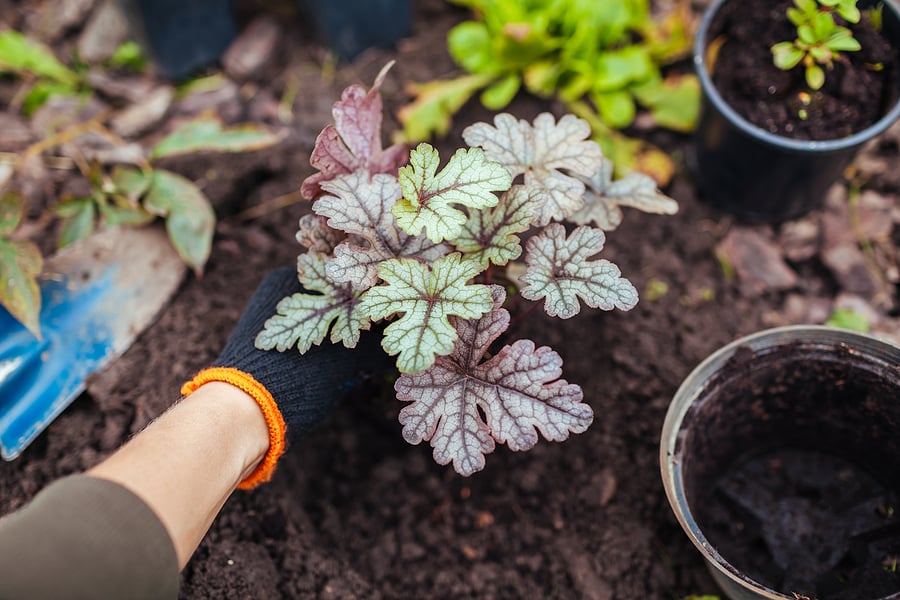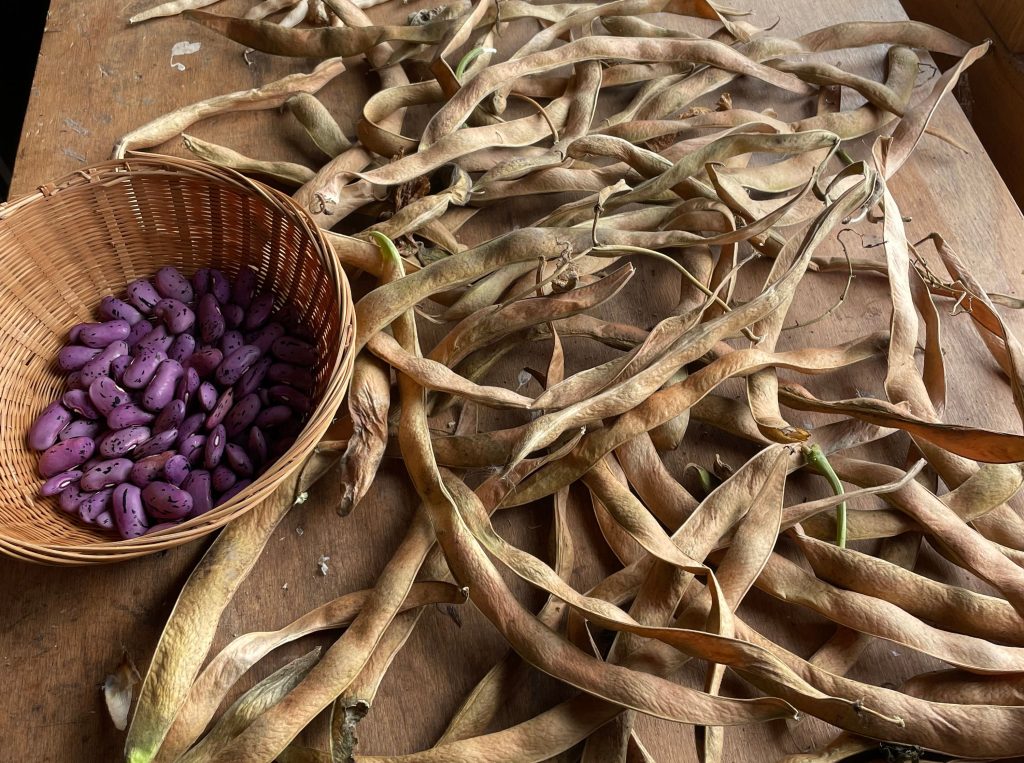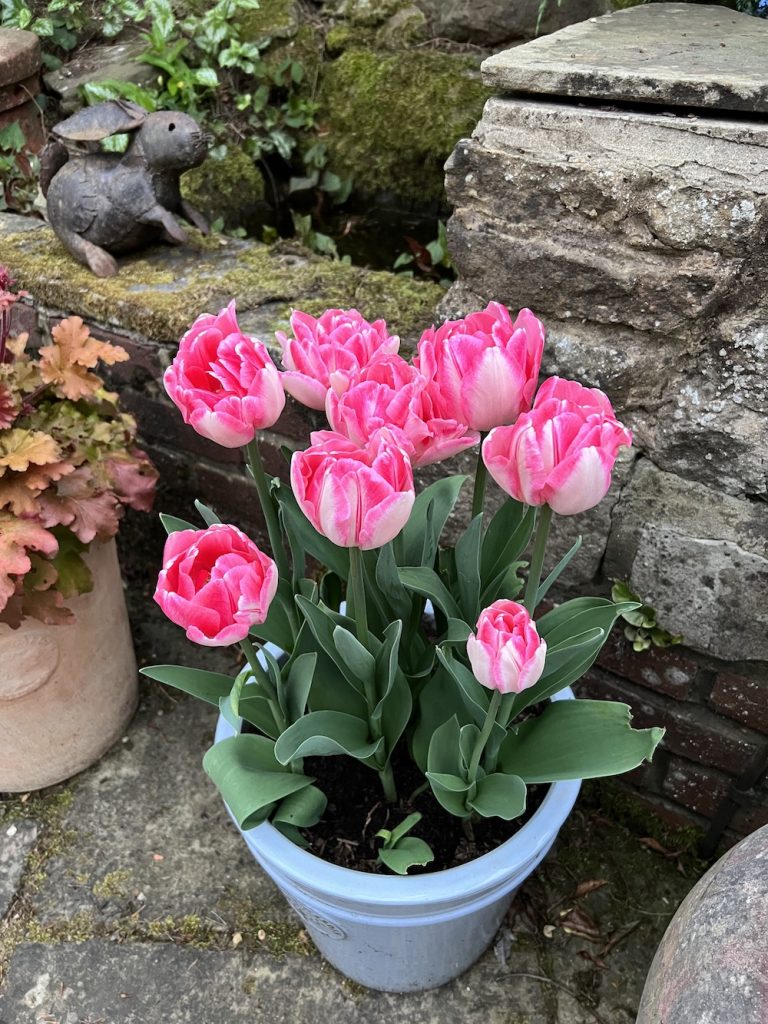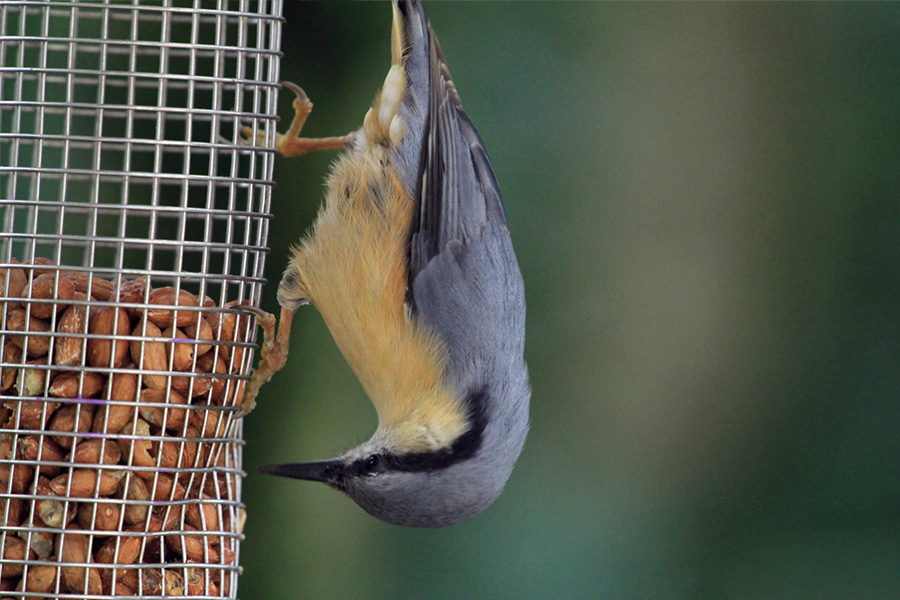Peter’s Gardening tips for October
Autumn has arrived and the weather is changing and becoming cooler, wet and unsettled.
October is the month when our gardens change dramatically, both in colour and the type of jobs that need attending to. Fungi are appearing daily, leaves are beginning to change colour and fall and wildlife are preparing for the new season collecting what they need for the chilly months ahead.
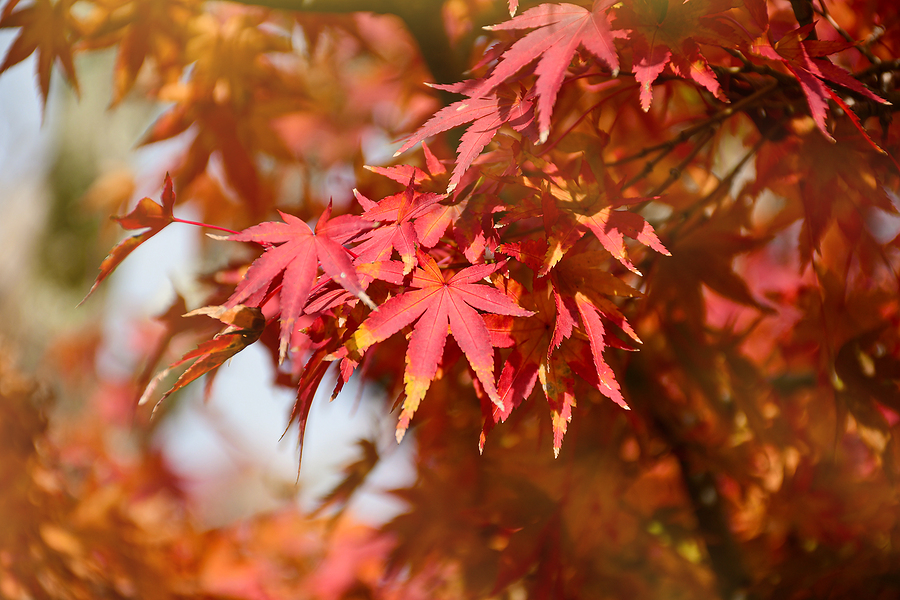
There are always jobs to be done in the garden, whatever time of year.
Jobs to do this month:
- Make room in the compost bins for all the leaves to come! This is free garden compost – I know it’s a pain but it really does help your plants. Use a rotary mower to hoover up
- Dig over vegetable beds or rotovate before heavy rain comes.
- Buy garlic, autumn onion/shallots for planting.
- Buy spring-flowering bulbs – daffodils, crocus, tulips etc.
- Plant winter flowering plants such as winter-flowering heathers, foliage plants for containers with pansies, violas, primroses and polyanthus and bulbs underneath.
- Cut hedges.
- Treat lawns – scarify and aerate. Treat for moss.
- Bring in tender plants into the conservatory or house – lemons, bananas, orchids, and non-hardy plants such as geraniums, fuchsias, lantanas, cannas ……
- Harvest apples and pears
- Finish pruning trained fruit trees and wisteria.
- Repairs to shed roof.
- Pressure wash patio/decking and treat with an algicide.
- Make a list of the successes and failures in the veg patch and garden!
Spring Colour
Ordering autumn planted bulbs far in advance is key to securing the best varieties and will give the best discounts. Take a look at DutchGrown bulbs, operated by two brothers, Ben and Pete who are the 4th generation in their family to sell flower bulbs, and their business is located in the heart of the flower bulb district in Holland. They kindly gave some bulbs to the Silversurfers team and as you can see from the photos they are absolutely magnificent!
Autumn is the best time for planting spring bulbs giving them the winter months to put out roots in readiness for a spectacular display next spring.
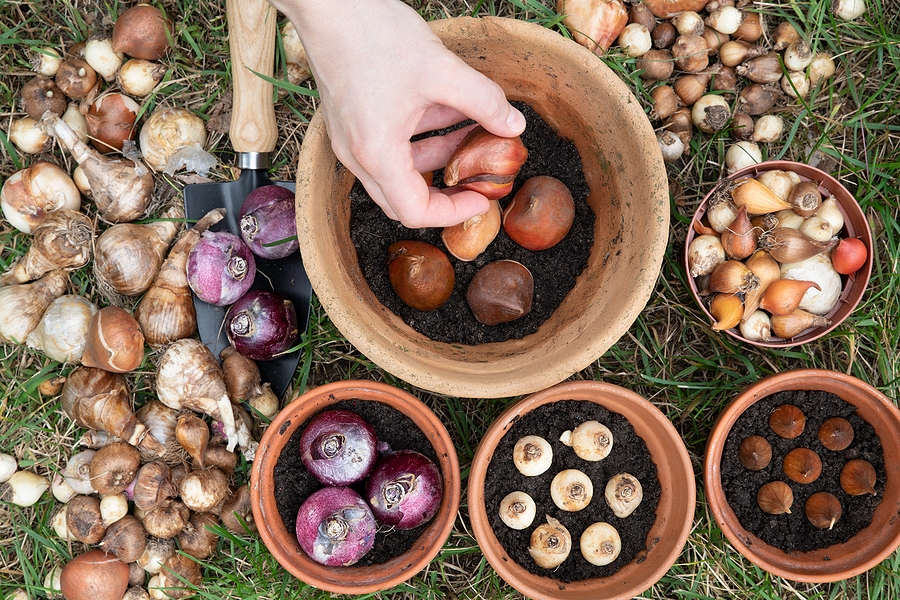 Lawns
Lawns
Scarify and aerate the lawn and put down autumn lawn feed with moss control which will be watered in later with the help of the rain!
The same goes for grass seed sowing. It will germinate as long as the soil is above 5°c.
Greenhouse
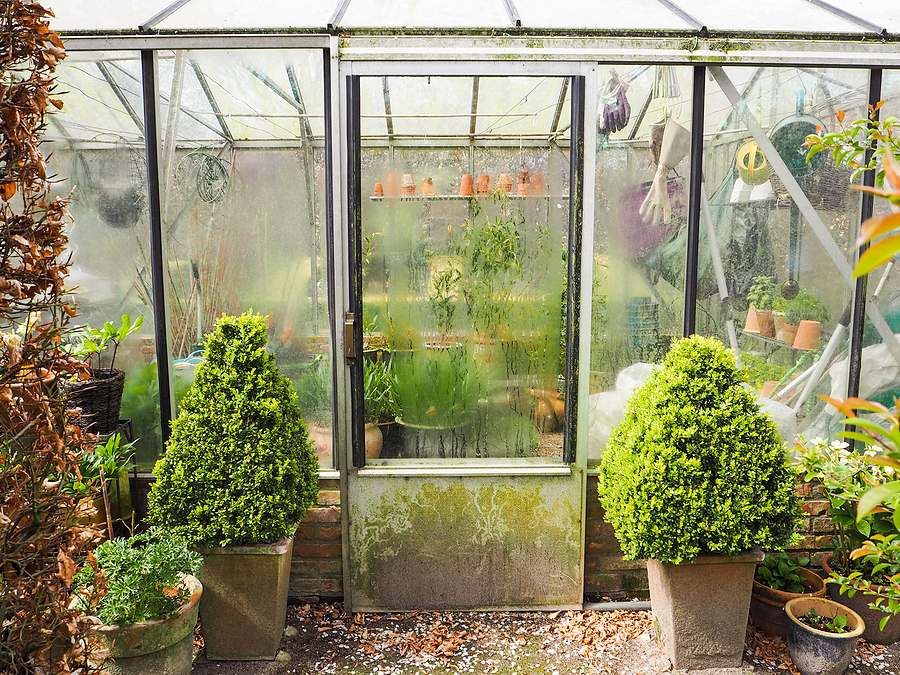
If you haven’t already tidy and clean out. Wash the glass down for maximum light levels. Insulate with bubble wrap or polycarbonate sheets. Bring in all tender plants and a few herbs to keep you supplied with over the coming weeks.
Planting Time, Digging up, Splitting and Dividing of plants
Unless your soil is really heavy clay, wet and sodden, now is the best time to plant new trees, shrubs and herbaceous plants. Large clumps of perennials can be lifted and divided. Clear away any non-productive veg and dig over the ground roughly leaving large lumps for the frost to break down. Raised beds can be mulched and let the worms draw the goodness down.
Wildlife
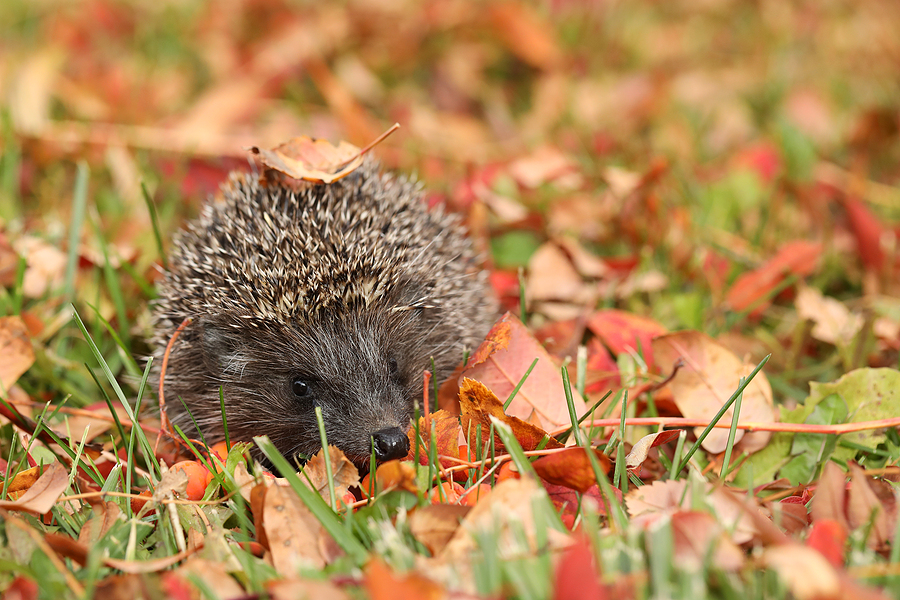 Hedgehogs will now be looking for winter shelter
Hedgehogs will now be looking for winter shelter
If you have a compost heap, you’re already halfway there for helping hedgehogs, because these hibernating mammals love them. So make sure you do any compost-turning slowly and carefully during the winter months so you don’t disturb your prickly friends, advises Helen Bostock, RHS senior horticultural adviser and co-author of How Can I Help Hedgehogs? Also, don’t block off the crawl spaces under garden sheds and decking, because hedgehogs also hibernate happily under there.
If you accidentally disturb a hibernating hedgehog, cover it back up as quickly as possible, leave a saucer of moist cat food and a shallow saucer of water nearby in case it needs to replenish its supplies, and give its surroundings a wide berth.
It’s not unusual for hedgehogs to wake up and move hibernation sites once or twice during the winter, so don’t worry if it relocates, but try and leave natural shelter such as piles of leaves in the garden or you can buy a hedgehog house.
Birds
The first flocks of redwings and fieldfares have been arriving to feed on another exceptional year of berries on hollies, cotoneasters, hawthorns and crab apples. Still, a few butterflies, bees, wasps and bumblebees feeding on the ivy flowers and anything else in flower.
Don’t forget the regular birds who visit your garden. Ivel Valley are a family run, Bedfordshire-based farm who specialise in high-quality wild bird food, packed with all the nutrients birds need to thrive in Britain. All of their recipes are developed with an Ornithologist and each ingredient is specially selected for its nutritional value and benefit to the birds. You can get 15% discount with Ivel Valley by visiting their Discounts+ offer here.
Happy Gardening!
Latest posts by Peter Mills (see all)
- Peter’s Gardening Tips for the month of April - March 31, 2025
- Gardening Masterclass: How to prune roses, hydrangeas, shrubs and trees - March 2, 2025
- Peter’s Gardening tips for March - March 1, 2025
- Peter’s Gardening Tips for February - January 29, 2025
- Peter’s Gardening Tips for January 2025 - January 2, 2025








